My first implementation of a magnetic pendulum that can draw something.
I constructed a magnetic pendulum with movable brush – a simple v1 hack based on my idea for a physics based calligrapher – and played around with it for half an hour in my garage.
The brush and magnets were ordered via Amazon and the rest could be purchased from our local hardware store; everything cost about $80.
- a ring magnet glued to a vinyl tube as pendulum attached to some fishing line and suspended from a board
- a plywood board with some metal sheets glued to it as magnet base, and a few more rare-earth magnets as attractors
- a acrylic sheet placed flat above the magnets to hold the rice paper
- a brush suspended from more fishing line with a manual pulley control to lower it onto the paper while the pendulum swings
This what the final construction looks like:
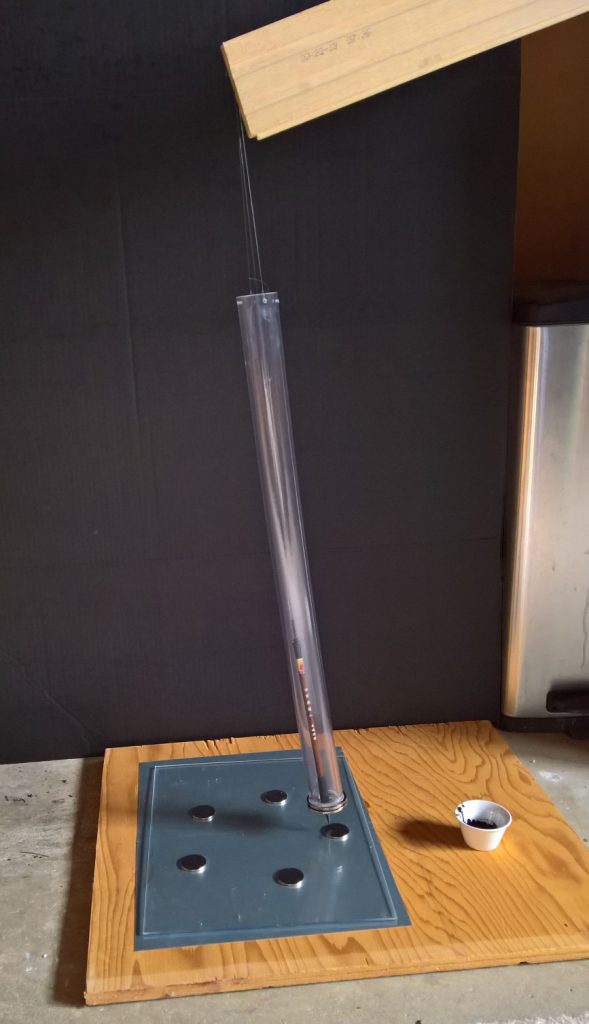
The steps to use the pendulum were as follows:
- height align the pendulum
- setup magnets in a pattern and experiment with pendulum motion
- cover magnets with acrylic sheet and place paper
- dip the brush into the ink
- let pendulum swing and lower brush using the string holding the brush when there are interesting patterns, repeat
and produced some cool results:
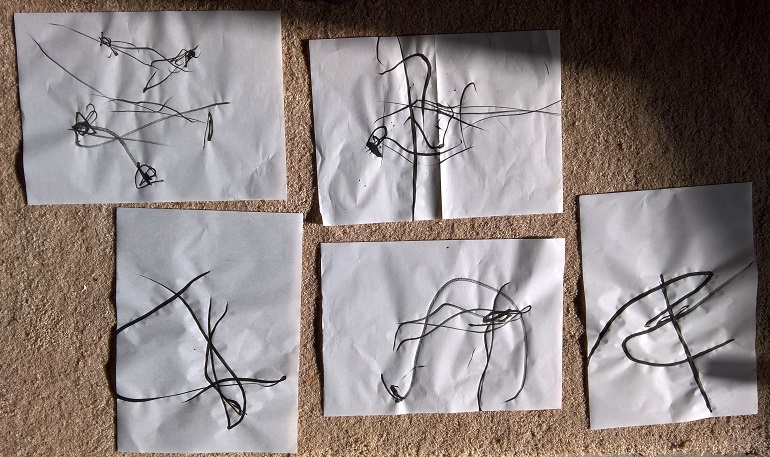
(full gallery below)
Some of the learning’s:
- It feels like this thing has potential to make some very interesting graphics. I don’t know much about Chinese characters or Calligraphy, so for me this is all just cool physics-inspired “graphics” at the moment.
- The rare-earth magnets can stick together so much, that one needs a putty knife and a lot of force to get them apart. High powered magnets are a must though to scale the pendulum up in size (and a larger scale is needed to lower the pendulum frequency).
- The pendulum in its current v1 size is to fast; it needs to be longer to lower the frequency of the swings.
- The v1 rope construction tangles and the fishing line is too stretchy. To make this work, the pendulum suspension needs to be more rigid.
- The brush control in v1 was too simple and very hard to control. One needs to move the brush height very quickly, because one needs to be able to make short stroke segments to be able to compose characters. One probably needs to use an electro-mechanical linear actuator for good brush control.
- I tried to compare the paths with the ones from the digital simulation with my pendulum, and it totally did not match. The mechanics of the real pendulum have nothing to do with the simplified simulated physics. However, when building the pendulum, I would have like to have a calibrated simulation to be able to predict what happens when sizes are changed.
- The physical texture of the ink brushed on the paper is so much nicer than the computer images I made before.
Other ideas that came up while working on v1:
- While untangling the fishing wire holding the brush, I though: Could one paint with light onto photo-sensitive paper or using a long-exposure digital camera picture? A light source is the ultimate in toggle “speed” as light can be switched on an off very quickly.
- My friend Hung Keung had the idea, that the placement of magnets could align with a Chinese character. I only have 5 magnets at the moment, so could take any graphics of a character with 5 marked magnet positions, print it out, and place it on the metal as a template for positioning the magnets.
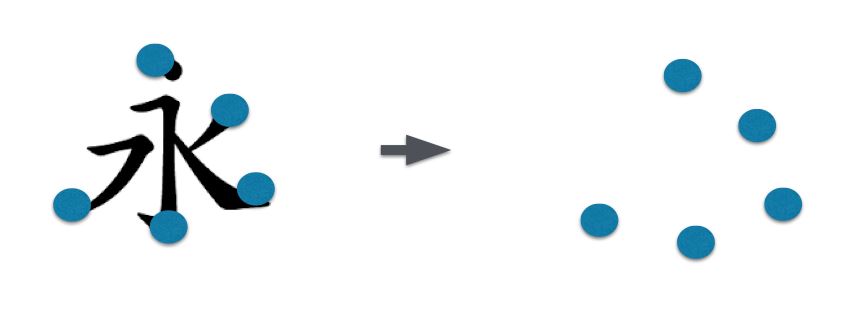
The next step will be to evolve this to a v2 version with a longer more rigid pendulum suspension made from wood and a weight-down the brush with electronic control.
(click to show next image)





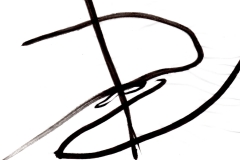
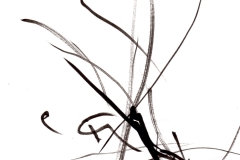
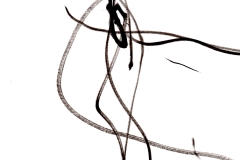
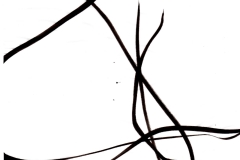
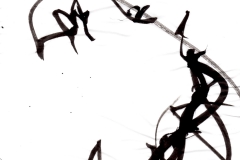
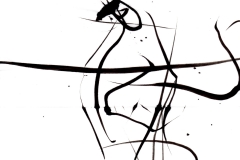
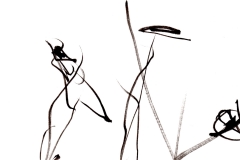
Pingback:Magnetic Pendulum Calligraphy (v2) – ferzkopp.net